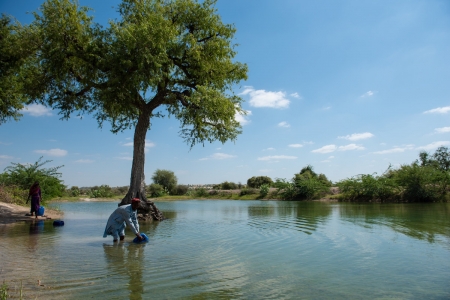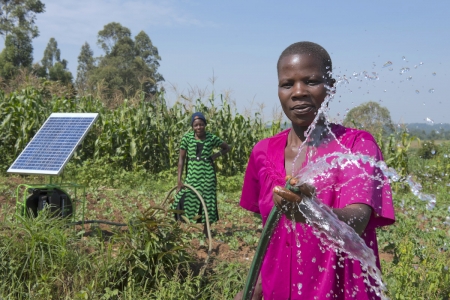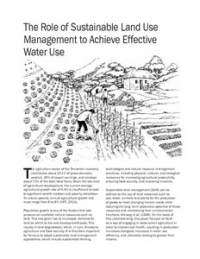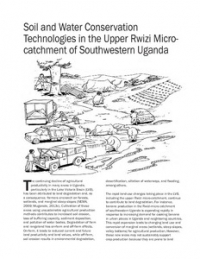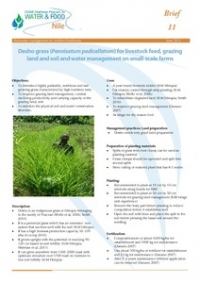For millennia, storing water has been a cornerstone of survival for many societies, especially in dry areas or areas with large climatic variability. In periods of plenty such as monsoons, rainy seasons, and springtime snowmelt, water storage has ensured water availability for drinking, irrigation and, more recently, hydropower generation. It has helped communities to manage not only predictable variation in water availability, but also uncertainty, mitigating some of the worst impacts of floods, droughts, storms and other catastrophic events. Put simply, storage is an essential component of water resource management and contributes significantly to overall water security.
However, in many countries, a growing water storage gap is now threatening to undermine socio-economic development. A new policy paper by the Global Water Partnership (GWP) and the International Water Management Institute (IWMI) proposes a more integrated approach to water storage: focusing on what ultimately matters – the ability of the water system as a whole to reliably provide different services at a particular time and place. The paper argues that this will make a significant contribution to overcoming the water storage gap.
Rather than constructing a series of stand-alone engineered facilities, with a narrow focus on the water volumes each can store, storage systems should combine different water storage elements in an integrated network, to guarantee a wide range of reliable water related services (such as drinking water and irrigation services, ecosystem functions, energy security, and flood and drought protection).
To strengthen water security, water managers should develop system-wide operating plans that combine and integrate a wide range of storage types – both natural and human built. After all, if water supply is dependent on a single lake, dam or aquifer, any problems experienced by that facility will directly affect water supply. In contrast, integrated systems only fail if there are concurrent shortfalls in multiple storage types. In addition, system-wide plans can be adapted over time as external conditions change, providing managers with greater flexibility and boosting community resilience to external shocks, such as floods and droughts – which are predicted to become increasingly severe and more frequent due to climate change and other societal and natural changes.
The critical role of natural storage
Re-examining the role of natural storage is a good starting point for understanding the potential of the integrated approach proposed. Despite a remarkable increase in built storage over the past century, nature continues to supply the vast bulk of water storage on earth. For example, globally, natural lakes and aquifers contain, respectively, nearly ten times and several thousand times as much water as is stored by dams. Cumulatively, wetlands also store significant volumes.
Taking an integrated services approach allows a 'like for like' comparison of different types and combinations of storage. It makes it possible to articulate desired service parameters (e.g., volume delivered and reliability) that can then be used to determine which system of diverse storage options – including natural storage – can best meet various needs. It also encourages planners to take into account the interactions between natural and built storage, for instance, when storing water in dams can reduce downstream aquifer recharge.
The proposed integrated approach offers significant advantages over conventional piecemeal approaches, which treat natural storage as a part of the baseline and often focus narrowly on building additional infrastructure to address existing shortfalls. This single facility approach to planning and managing water storage is increasingly coming under strain.
A growing water storage gap
While water consumption continues to increase due to burgeoning populations, economic growth, and changes in diets and lifestyles, climate change is increasing the variability of rainfall, evaporation, and groundwater recharge. Over a billion people worldwide currently rely on glaciers and seasonal snowpacks for their water supply, but these stores of frozen water are shrinking due to global warming. Degradation of wetlands, over pumping of groundwater, and over abstraction from lakes and the rivers that flow into them, are also depleting natural water stores.
In future, maintaining and expanding some options for storage will also become impracticable to satisfy growing storage needs. Although humans have built more than 57,000 large dams globally since 1950, construction of large dams has declined sharply in recent decades – partly because the most promising dam sites are already occupied, but also due to growing awareness of negative social and environmental impacts. Meanwhile, siltation is progressively reducing the capacity of existing dams. Per capita storage has been steadily declining in many river basins since the 1980s.
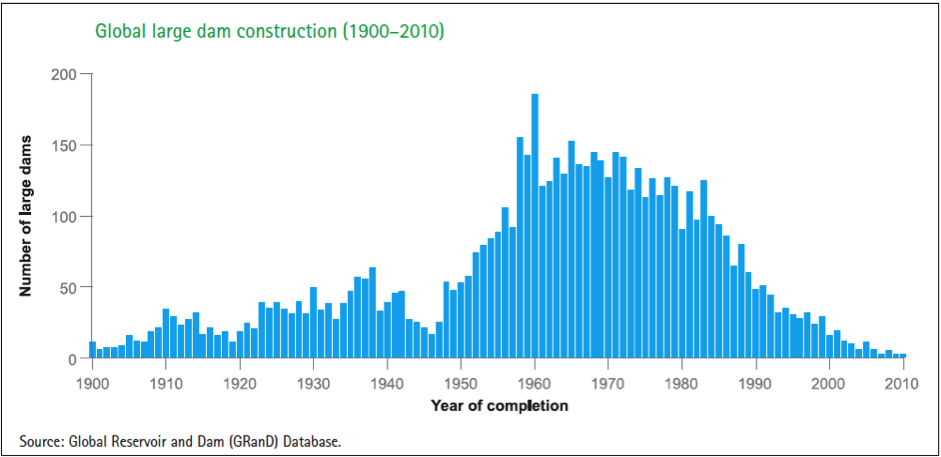
Implementing a system-wide approach
Nonetheless, moving beyond the current human-built facility-centred approach will not be easy. Even when dealing with traditional single units in isolation, water governance is already a major challenge. Integrating different types of storage and managing them in tandem at a systems level will complicate governance arrangements and require much greater coordination and collaboration across multiple actors. In addition, complete inventories of water storage and data on its characteristics is often lacking – even the volumes of water stored – for built and natural storage alike.
On the positive side, integrated approaches will make the environmental co-benefits of some storage solutions visible. If applicable, carbon sequestration or the promotion of biodiversity could help make such schemes eligible for 'green' financing approaches such as green bonds – a crucial consideration given that achieving the water-related Sustainable Development Goals (SDG 6 and many targets of other SDGs) will require an estimated investment of US$6.7 trillion in the water sector by 2030.
One thing is clear: against the backdrop of growing populations with escalating water demands and the worsening impacts of climate change, water managers need more options and greater flexibility to overcome the challenges ahead. Developing and managing water storage systems wisely is indispensable to ensuring sustainable socio-economic development and building resilience. Adopting an integrated approach will be far from easy, but the ad-hoc approaches of the past are no longer viable.
---
Thrive blog is a space for independent thought and aims to stimulate discussion among sustainable agriculture researchers and the public. Blogs are facilitated by the CGIAR Research Program on Water, Land and Ecosystems (WLE) but reflect the opinions and information of the authors only and not necessarily those of WLE and its donors or partners.
WLE and partners are supported by CGIAR Trust Fund Contributors, including: ACIAR, DGIS, FCDO, SDC, Sida and others.














